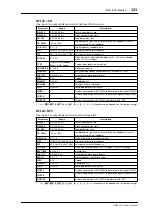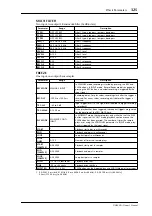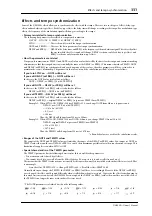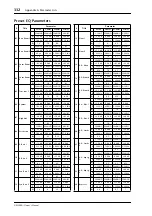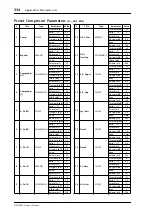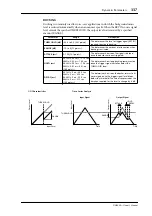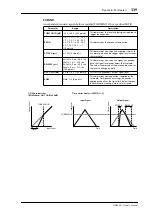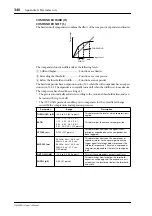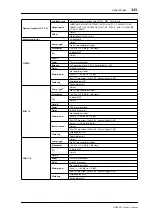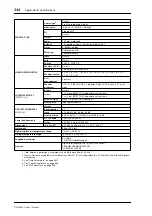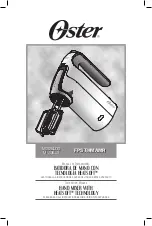
Dynamics Parameters
337
DM2000—Owner’s Manual
DUCKING
Ducking is commonly used for voice-over applications in which the background music
level is reduced automatically when an announcer speaks. When the KEY IN source signal
level exceeds the specified THRESHOLD, the output level is attenuated by a specified
amount (RANGE).
Parameter
Range
Description
THRESHOLD (dB)
–54.0 to 0.0 (541 points)
This determines the level of trigger signal (KEY IN)
required to activate ducking.
RANGE (dB)
–70 to 0 (71 points)
This determines the amount of attenuation when
ducking is activated.
ATTACK (ms)
0–120 (121 points)
This determines how soon the signal is ducked
once the ducker has been triggered.
HOLD (ms)
44.1kHz: 0.02 ms – 2.13 sec
48kHz: 0.02 ms – 1.96 sec
88.2kHz: 0.01 ms – 1.06 sec
96kHz: 0.01 ms – 981 ms
(160 points)
This determines how long ducking remains active
once the trigger signal has fallen below the
THRESHOLD level.
DECAY (ms)
44.1kHz: 6 ms – 46.0 sec
48kHz: 5 ms – 42.3 sec
88.2kHz: 3 ms – 23.0 sec
96kHz: 3 ms – 21.1 sec
(160 points)
This determines how soon the ducker returns to its
normal gain once the trigger signal level drops
below the threshold. The value is expressed as the
duration required for the level to change by 6 dB.
Input Level
Time
Time
Output Le
v
e
l
Input Le
v
e
l
Output Le
v
e
l
I/O Characteristics
Time Series Analysis
RANGE
THRESHOLD
THRESHOLD
RANGE
Input Signal
Output Signal
ATTACK
DECAY
HOLD

